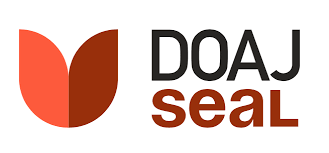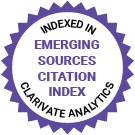JMIR Research Protocols
Protocols, grant proposals, registered reports (RR1)
Editor-in-Chief:
Amy Schwartz, MSc, Ph.D., Scientific Editor at JMIR Publications, Ontario, Canada
Impact Factor 1.4 CiteScore 2.4
Recent Articles

Specific learning disorder (SLD) of reading skills impacts approximately 7% of children. Speech and reading therapy is currently the gold-standard intervention for improving children’s reading abilities. However, intensive interventions are difficult to implement. Recently, numerous studies have investigated the interest of game- and home-based training approaches to enhance children’s motivation and facilitate intensive learning activities in home settings. The serious game Poppins Clinical integrates rhythm and specific written language exercises to improve reading skills in children with SLD.

Maintaining functional health, or the ability to live independently, is a primary goal of individuals as they age, but most older adults develop chronic conditions that threaten this goal. Physical activity is a key aspect of self-care that can improve functional health, and digital interventions offering guidance on appropriate exercise can help. However, older adults with multiple morbidities may be unable to use a laptop or smartphone-based eHealth because poor vision, dexterity, mobility, or other physical challenges make typing or touch navigation difficult. A smart display platform—comprising a smart speaker plus a small visual screen—has the potential to remove these barriers because it is voice-activated.

The human papillomavirus (HPV) vaccine is an effective way to prevent HPV and its associated cancers. Provider recommendation has been shown to be one of the most successful strategies for increasing the uptake of the HPV vaccine; however, more training and resources are needed to help boost health care providers’ confidence and communication skills in recommending the HPV vaccine to their patients, particularly in underserved Hispanic communities where vaccination rates among all ages are lower.

The 5-Cog paradigm is a 5-minute brief cognitive assessment coupled with a clinical decision support tool designed to improve clinicians’ early detection of cognitive impairment, including dementia, in their diverse older primary care patients. The 5-Cog battery uses picture- and symbol-based assessments and a questionnaire. It is low cost, simple, minimizes literacy bias, and is culturally fair. The decision support component of the paradigm helps nudge appropriate care provider response to an abnormal 5-Cog battery.

The use of data standards is low across the health care system, and converting data to a common data model (CDM) is usually required to undertake international research. One such model is the Observational Medical Outcomes Partnership (OMOP) CDM. It has gained substantial traction across researchers and those who have developed data platforms. The Observational Health Care Data Sciences and Informatics (OHDSI) partnership manages OMOP and provides many open-source tools to assist in converting data to the OMOP CDM. The challenge, however, is in the skills, knowledge, know-how, and capacity within teams to convert their data to OMOP. The European Health Care Data Evidence Network provided funds to allow data owners to bring in external resources to do the required conversions. The Carrot software (University of Nottingham) is a new set of open-source tools designed to help address these challenges while not requiring data access by external resources.


In Mali, a lack of qualified human resources in primary health care and sexual and reproductive health and rights (SRHR) is one of the greatest barriers to the population’s access to standard health services. Frontline professional training must be strengthened to respond to the needs of the population, particularly those of women and girls. Training must be conducted using an interdisciplinary and adapted approach to promote gender equality.

Adolescent girls and young women constitute a priority population disproportionately affected by HIV, accounting for 25% of annual HIV incidence among people older than 15 years in Kenya. Although oral preexposure prophylaxis (PrEP) is effective in reducing HIV acquisition, its protective benefit has been limited among adolescent girls and young women in sub-Saharan Africa because of low uptake, adherence, and persistence. Intimate partner violence (IPV) and relationship power inequities are widespread among adolescent girls and young women and contribute to higher HIV incidence and lower PrEP use. Interventions are needed to support sustained PrEP use among adolescent girls and young women by addressing IPV and relationship dynamics.


Glaucoma is the leading cause of irreversible blindness worldwide, causing continuous and progressively worsening damage to visual function, which leads to vision loss. Optic nerve protection is an important treatment for glaucoma with controlled intraocular pressure (GPCI), but to date, there is no universally accepted effective optic nerve protection agent. Acupuncture can protect the optic nerve by increasing blood flow to the eye. However, fear of pain or the limitations of treatment place and time lead to poor patient compliance. Press-needle therapy is a characteristic of traditional Chinese medicine (TCM) external treatment methods; its safety is high, the effect is fast and lasting, it is easy to conduct, and it has high patient compliance.

The hospital experience is often marked by fear and pain, particularly for children undergoing medical procedures. Sedation is commonly used to alleviate patient anxiety, but it poses additional health risks. Caregivers, usually the parents, also experience emotional distress during the child’s hospital stay, which can further exacerbate the child’s anxiety and pain. While various interventions exist to ease patient distress, few consider the emotional well-being of caregivers.

Norgestimate (NGM) is a progestin with negligible androgenic activity that is available in combination with ethinyl estradiol (EE) as a monophasic combined oral contraceptive (COC). It has been more than 30 years since a clinical study evaluated the effects of monophasic NGM/EE on menstrual cycle characteristics in healthy women, and in the interim, there has been growing recognition that clinical trials of contraceptives should evaluate a wide range of potential positive and negative impacts for users.
Preprints Open for Peer-Review
Open Peer Review Period:
-













